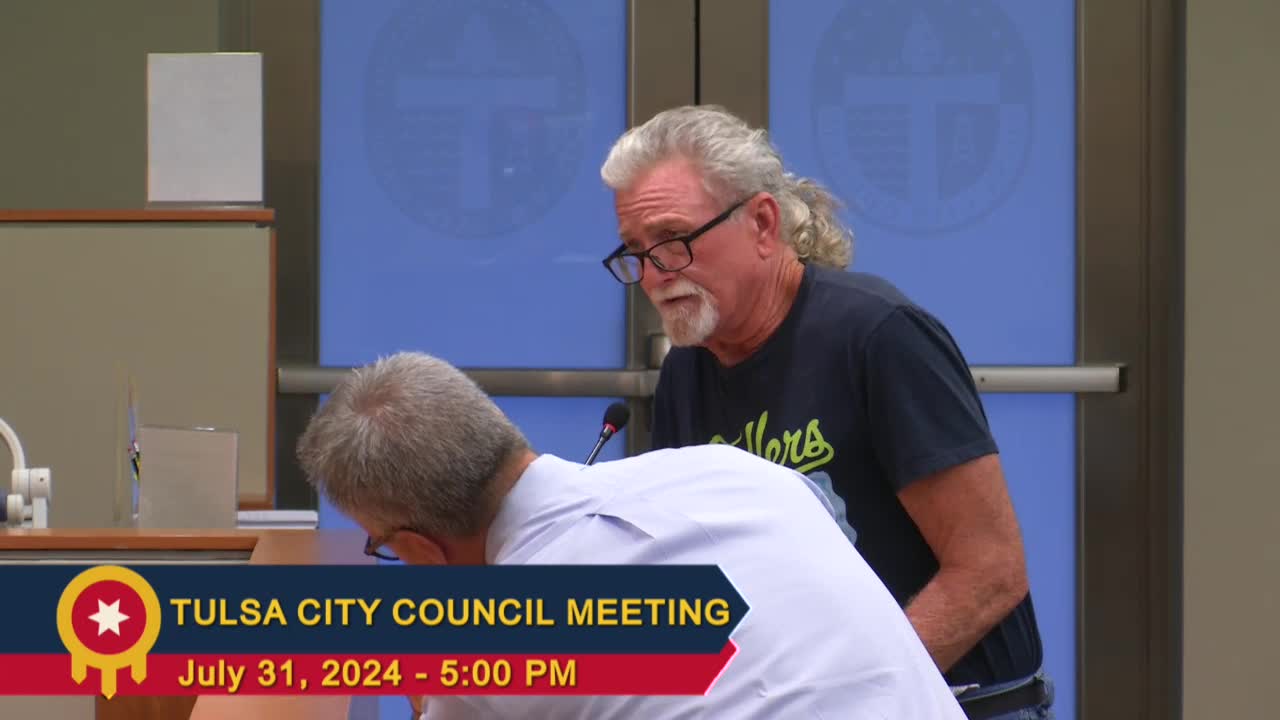Water safety concerns rise amid hazardous waste monitoring
July 31, 2024 | City Council Meetings, Tulsa, Tulsa County, Oklahoma

This article was created by AI summarizing key points discussed. AI makes mistakes, so for full details and context, please refer to the video of the full meeting. Please report any errors so we can fix them. Report an error »

In a recent government meeting, officials discussed critical water management issues affecting the region, particularly focusing on the impact of rainwater influx on local water bodies. The conversation highlighted that there are no continuous flow industries between the dam and Zink Lake, indicating that the primary concern is rainwater runoff.
Key points included the identification of a hazardous waste site near Kawah Road, where out-of-state waste is reportedly being deposited. Officials noted that while monitoring this site, the challenge remains in preventing contaminants from reaching the river, although the area's sand base provides a natural filtration system.
Plans for a new low water dam between Sand Springs and the existing dam were also outlined. This dam, expected to be 8 to 12 feet high, will serve as a feeder for the lakes in the area. The meeting emphasized that rainwater will significantly influence water levels and quality, particularly during heavy rainfall events, which can lead to increased runoff from urban areas like Tulsa.
Concerns were raised about the local refinery, with assurances provided regarding safety measures in place to prevent contamination. Officials stated that water from the refinery undergoes rigorous treatment processes, ensuring that it meets safety standards before entering the local water supply.
The discussion concluded with a strong emphasis on water safety, particularly in light of past incidents of drownings at local sites. Officials stressed the importance of public education regarding water safety, especially during high flow conditions when swift water can pose significant risks. The meeting underscored the need for ongoing monitoring and community awareness to ensure the safety and quality of the region's water resources.
Key points included the identification of a hazardous waste site near Kawah Road, where out-of-state waste is reportedly being deposited. Officials noted that while monitoring this site, the challenge remains in preventing contaminants from reaching the river, although the area's sand base provides a natural filtration system.
Plans for a new low water dam between Sand Springs and the existing dam were also outlined. This dam, expected to be 8 to 12 feet high, will serve as a feeder for the lakes in the area. The meeting emphasized that rainwater will significantly influence water levels and quality, particularly during heavy rainfall events, which can lead to increased runoff from urban areas like Tulsa.
Concerns were raised about the local refinery, with assurances provided regarding safety measures in place to prevent contamination. Officials stated that water from the refinery undergoes rigorous treatment processes, ensuring that it meets safety standards before entering the local water supply.
The discussion concluded with a strong emphasis on water safety, particularly in light of past incidents of drownings at local sites. Officials stressed the importance of public education regarding water safety, especially during high flow conditions when swift water can pose significant risks. The meeting underscored the need for ongoing monitoring and community awareness to ensure the safety and quality of the region's water resources.
View full meeting
This article is based on a recent meeting—watch the full video and explore the complete transcript for deeper insights into the discussion.
View full meeting
